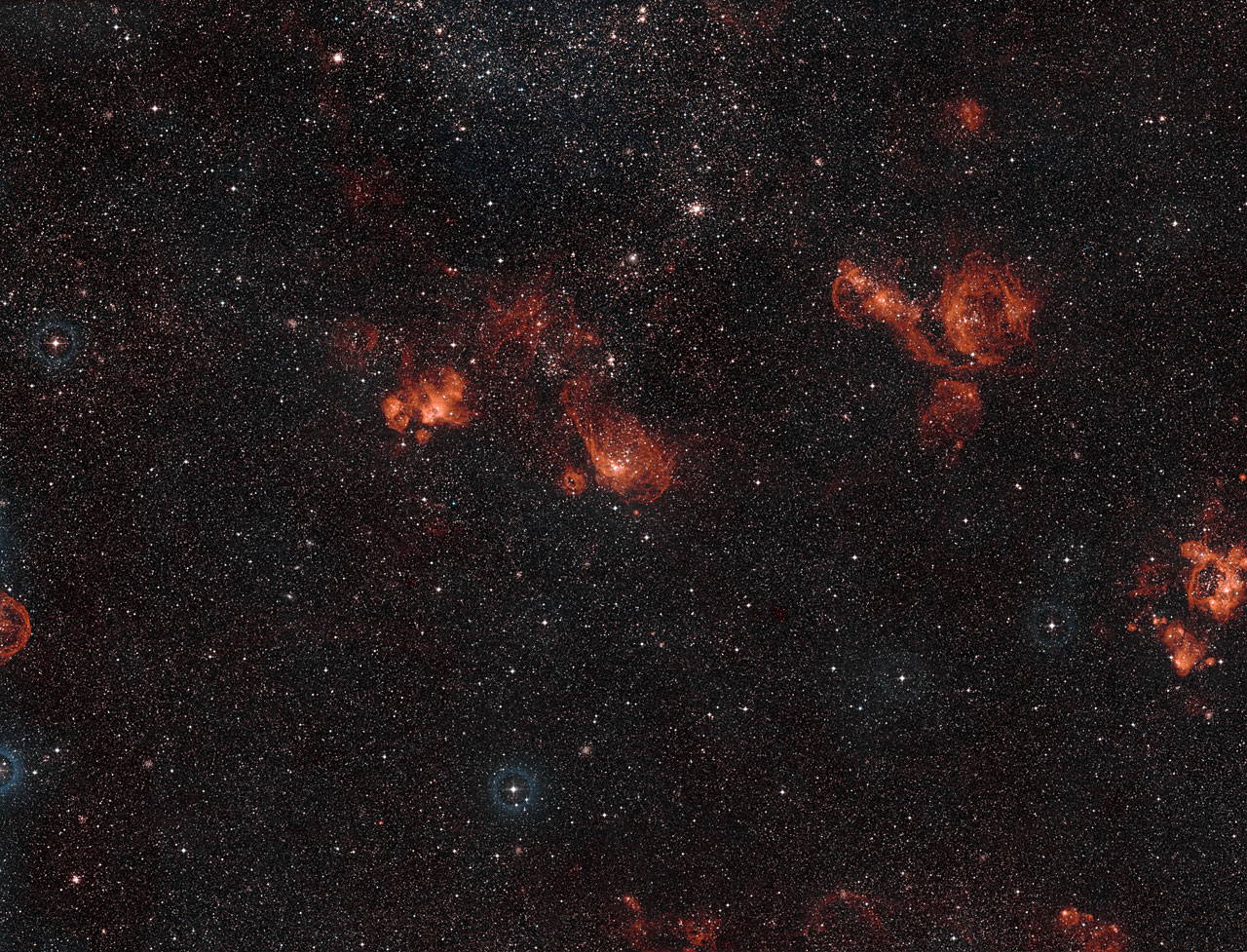Brilliant Space Clouds Shine Red & Blue in Telescope Views (Photos)

An incredible new photo taken by a telescope in the Southern Hemisphere captures an odd couple shimmering beautifully in a star-forming region of a nearby galaxy.
The new photo was taken by the Very Large Telescope in Chile and shows two clouds of gas shining in blue and red in the Large Magellanic Cloud, about 163,000 light-years from the Milky Way. The European Southern Observatory, which oversees the Very Large Telescope, unveiled the image today (Aug. 6) along with a video tour of the photo of the dazzling cosmic clouds.
"The strikingly different colors of NGC 2014 and NGC 2020 are the result of both the different chemical makeup of the surrounding gas and the temperatures of the stars that are causing the clouds to glow," officials from ESO wrote in an image description. "The distances between the stars and the respective gas clouds also play a role."
The pink cloud, NGC 2014, is mostly composed of hydrogen gas. A cluster of young, hot stars emits radiation that strips electrons from the atoms in the gas, creating the red glow, ESO officials said. Stellar winds from the new stars cause the gas around them to scatter.
NGC 2020 is the blue circle of gas around the bright new star shining on the left hand side of the image. The star could be more than 10 times as hot as the surface of Earth's sun, ESO officials wrote.
"The distinctive blueish color of this rather mysterious object is again created by radiation from the hot star — this time by ionizing oxygen instead of hydrogen," ESO officials said of NGC 2020.
The Large Magellanic Cloud and its counterpart, the Small Magellanic Cloud, were named for the explorer Ferdinand Magellan. Although Magellan died in the Philippines before returning to Europe, his crew brought news of the celestial sights to the continent.
Breaking space news, the latest updates on rocket launches, skywatching events and more!
The Large Magellanic Cloud is about 14,000 light-years across, while the Milky Way extends about 100,000 light-years, ESO officials said. It is known as an irregular dwarf galaxy and plays host to less than one tenth the mass of the Milky Way.
Follow Miriam Kramer @mirikramer and Google+. Follow us @Spacedotcom, Facebook and Google+. Original article on SPACE.com.

Miriam Kramer joined Space.com as a Staff Writer in December 2012. Since then, she has floated in weightlessness on a zero-gravity flight, felt the pull of 4-Gs in a trainer aircraft and watched rockets soar into space from Florida and Virginia. She also served as Space.com's lead space entertainment reporter, and enjoys all aspects of space news, astronomy and commercial spaceflight. Miriam has also presented space stories during live interviews with Fox News and other TV and radio outlets. She originally hails from Knoxville, Tennessee where she and her family would take trips to dark spots on the outskirts of town to watch meteor showers every year. She loves to travel and one day hopes to see the northern lights in person. Miriam is currently a space reporter with Axios, writing the Axios Space newsletter. You can follow Miriam on Twitter.

